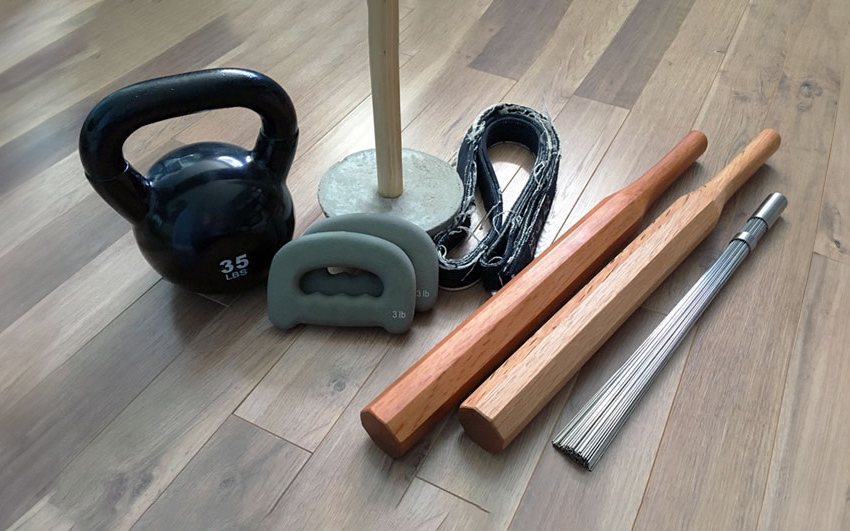My favorite equipment for Karate training at home
Train at home and see results in the dojo!
For some people, it’s difficult to get to the dojo as often as they would like to. If you are like me, you want to train every single day, at least 30 minutes. It’s totally possible to train your Karate from home, and today I’ll share with you a list of my favorite equipment that I use to do so.
Many of these tools are used in Hojo-Undo, traditional Okinawan “supplementary exercises” used to condition the body in terms of strength, endurance, coordination and posture.
I use these tools many times per week, some every day. You’ll see that they allow me not only to train my Karate but work on my conditioning as well. I hope you can benefit from this list, so here we go.
Standing punching bag
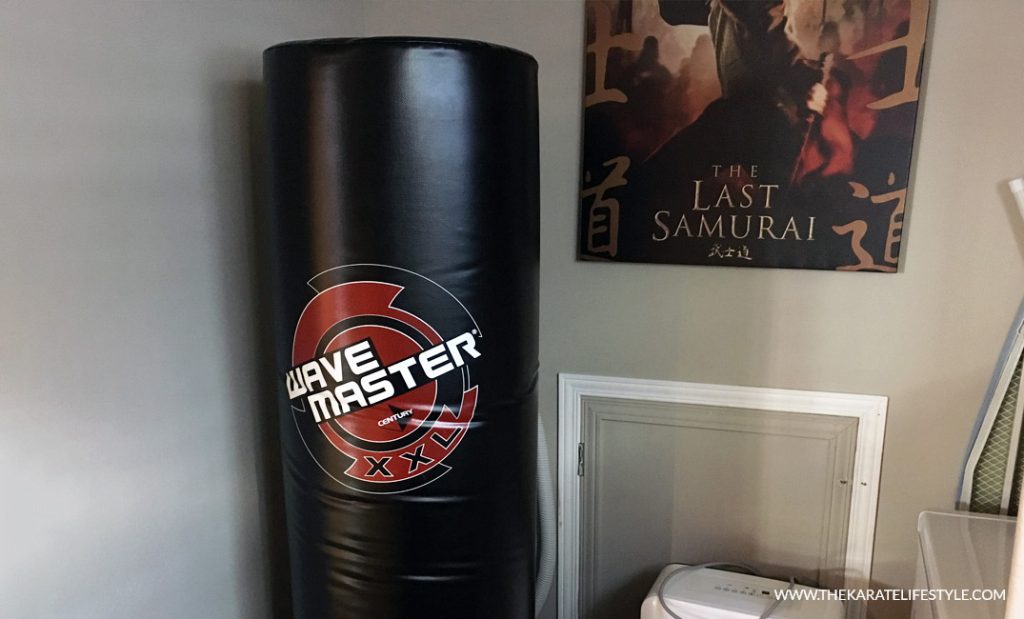
As you know, punching bags are a fantastic piece of equipment that can help you train various aspects of your Karate. When training from home, standing bags are a must if you don’t have a place to hang a traditional punching bag. That’s why I’ve bought my standing bag.
I have the Wavemaster XXL , and I love it! It’s sturdy, stable and its padding run lower than other models so I can practice low kicks on it. Of course, I can’t go full contact on a standing bag because it would quickly go on its back, but still, I can hit with a pretty decent amount of power. No complaints there.
I use it mainly to practice techniques of my punches, kicks, elbow and knee strikes, but it can also be used to develop stamina, endurance, and coordination. If you want to lose weight, punching bags are a great way to burn fat quite rapidly!
Training frequency: Three times a week.
Duration: Five minutes rounds, two-minute rest, for a total of 45-60 minutes.
Why I like it: I can practice my basic strikes on a target.
If you’re interested in using a punching bag for Karate, read these articles that I wrote about five ways punching bag training can boost your striking power and before you buy, discover my recommended selection of the best punching bags for martial artists.
Hand weights
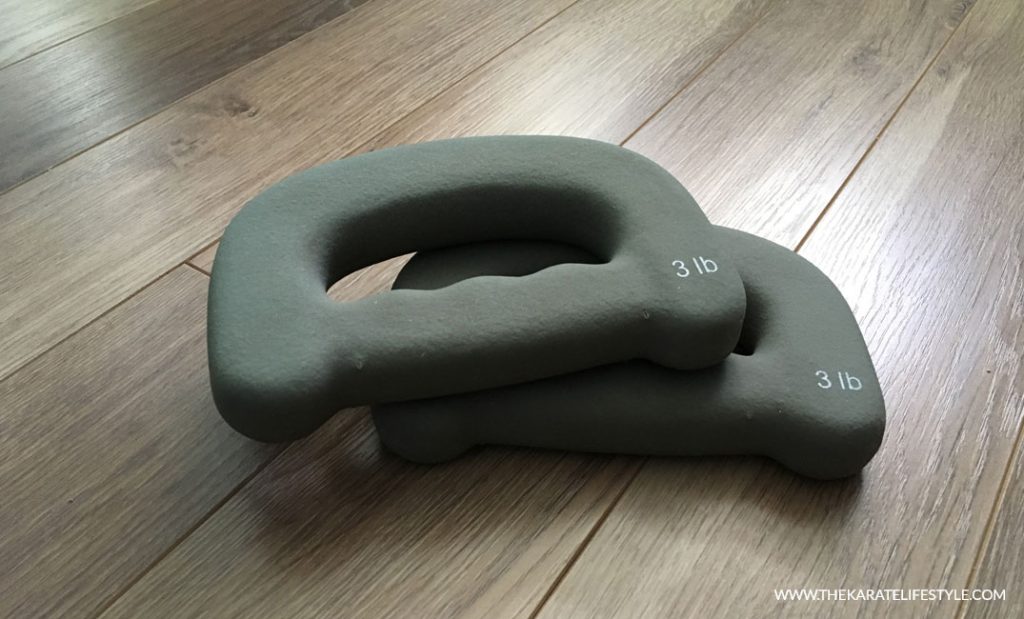
One of my favorite tools is without any doubt the hand weights . It’s similar to traditional ishi-sashi, a hojo-undo tool used in Okinawan Karate, but much lighter. Mine weights 3lbs, but that’s enough for the kind of training that I do with it.
I used them to practice basic Karate punches and blocks like I would at the dojo. I like working with the hand weights with kiba-dachi, zenkutsu-dachi, and sanchin-dachi stances. It’s a great tool to help increase your punches and blocks speed, as well as your forearms, arms, and shoulders endurance. If you don’t have these, you definitely should!
Training frequency: Twice a week.
Duration: 45-60 minutes.
Why I like it: I can mimic Karate strikes and blocks and combine it with movement.
Chi-ishi
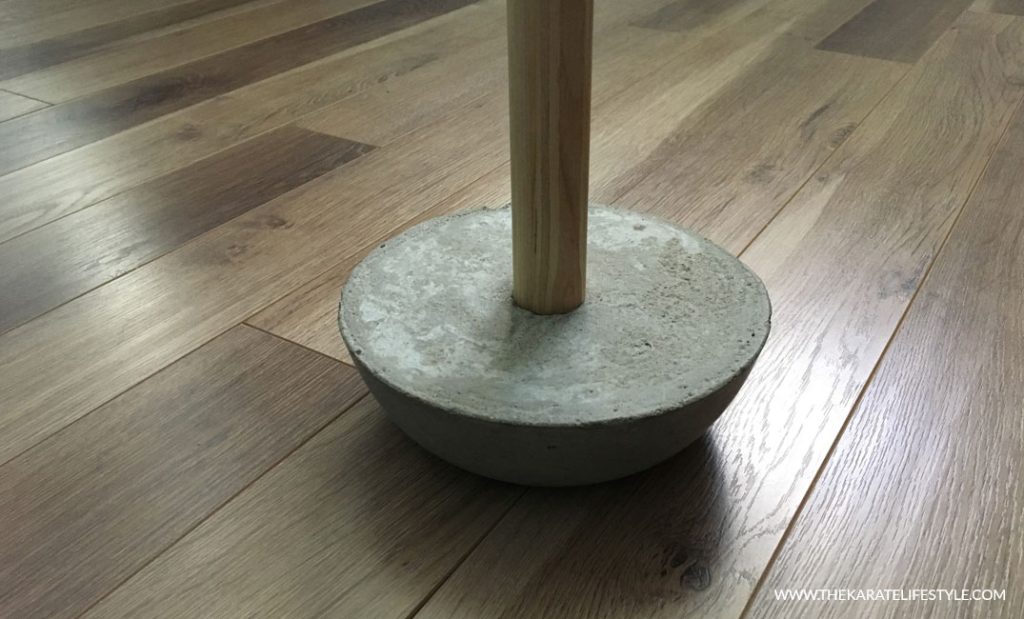
The chi-ishi or “energy stone” is a traditional karate tool mainly used in Goju-Ryu and Uechi-Ryu and it is used to strengthen the hands, wrist, forearm, arm, chest, shoulders, upper back, and legs. Okinawan karate practitioners have been using chi-ishi for centuries. They are great ways to build grip and wrist strength for striking, and a great complement to hand weight and kettlebells. Maybe it’s just in my head, but there is a traditional feel when working with chi-ichi.
There are some movements specific to the chi-ichi that you cannot do with other weighted tools like the “shoulder rotations” that works on specific muscle groups.
Chi-ishi are pretty expensive to buy, so a friend and I decided to make some instead. You can contact me via email for you are interested to buy one.
Training frequency: Every day
Duration: 5-10 minutes.
Why I like it: Really helps me condition and strenghten major muscle groups.
Kettlebells
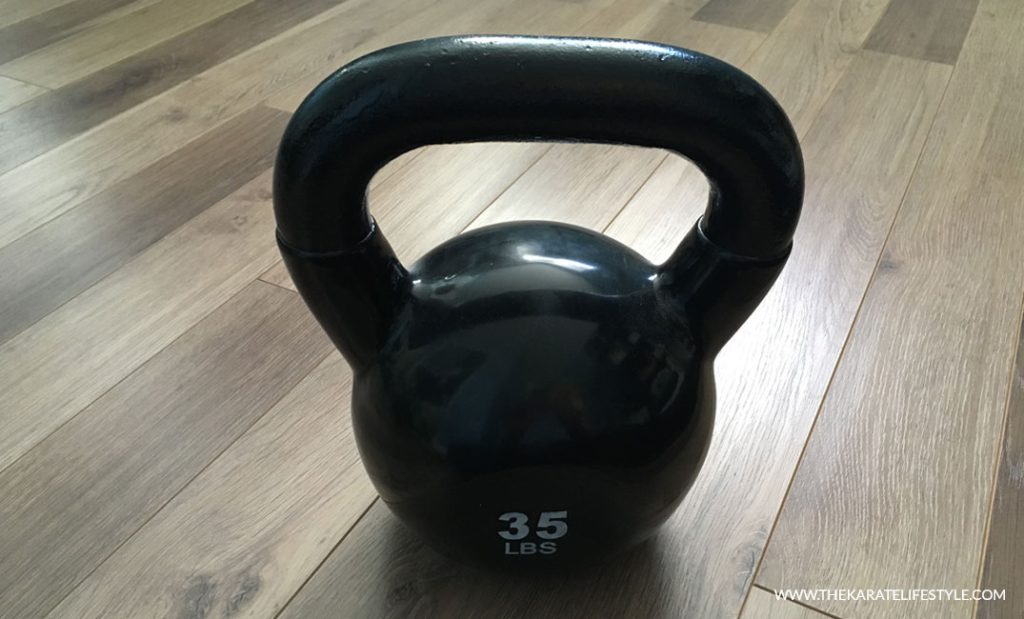
I started training with kettlebells a few years ago, and I fell in love with it! Like the hand weights, it’s also similar to the Okinawan ishi-sashi. I have two 30 lbs kettlebells, and I use them twice a week to perform exercises that combine strength and cardio, but, to be honest, I focus more on the strength aspect of it.
What is great with kettlebells is that they are fun to use and extremely versatile (unlike dumbbells). Kettlebell exercises offer a wide variety of movements that target every muscle group for a total body workout. I use my kettlebells to work on every single body parts – arms, shoulders, chest, back, legs and even abdominals.
Personally, I love doing Sanchin kata movements while holding a kettlebell high over my head, it’s quite challenging. I’m surprised at the amount of Karate people that never worked with kettlebells as the benefits are so numerous.
Training frequency: Twice a week.
Duration: 30-45 minutes.
Why I like it: Improving and gaining strength and endurance.
Ab Wheel
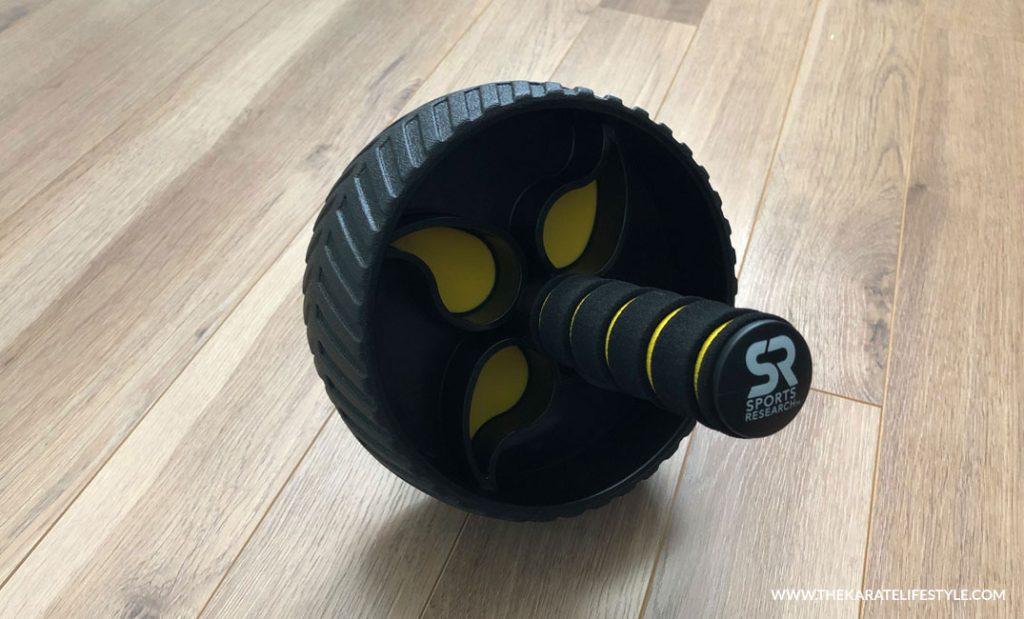
I use my ab wheel every single day! Honestly. I bought an Ab Wheel from a company called Sports Research , and I love this baby. It has a comfortable grips and a wide 3″ wheel for added stability. I had other models before, but I never really liked them.
Of course, you don’t need this piece of equipment in order to work on your abs, but let me tell you why I like working out it – it’s a fun alternative to “traditional” ab training. Sometimes I just need to diversify my workouts, so my ab wheel is perfect for that. Also, I found it really fun to use, so much so that it makes me work on my abs more frequently! That’s excellent for me!
Training frequency: Every day.
Duration: 15-20 min workout.
Why I like it: I use it to diversify my ab workout, and it’s fun to use.
Tetsutaba
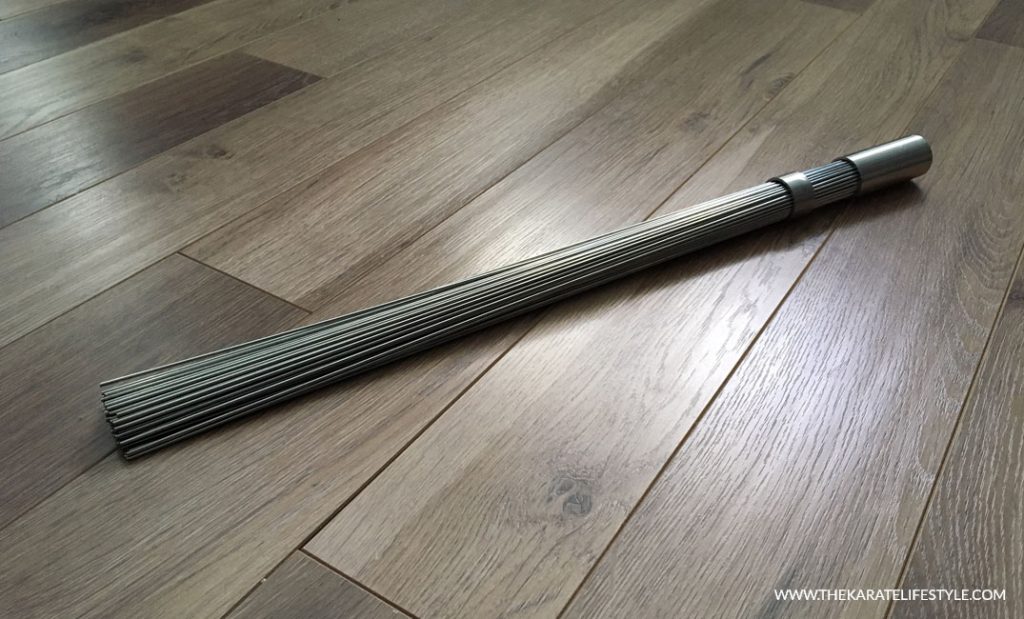
The tetsutaba (a.k.a body ‘Iron beater’) is my number one favorite tool! For those who don’t know, the tetsutaba is a traditional body conditioning tool of Chinese origin used in Okinawan Karate to develop resistance of your bones and muscles. Basically, you use it to hit yourself. It is particularly interesting to fortify and condition your forearms bones (radius & ulna) and tibia.
Not only I use it every day, I literally use it every 30 minutes! I work from home in front of a computer so I can allow to beat myself with it without raising suspicion! I also use it to condition my hands, fists, and fingers. Because I use it so often, my arms are hard as steel now.
Training frequency: Every day.
Duration: Every 30 minutes for 2 minutes, during an 8 hour period.
Why I like it: It gave me forearms and tibia of steel!
Ankle Weights
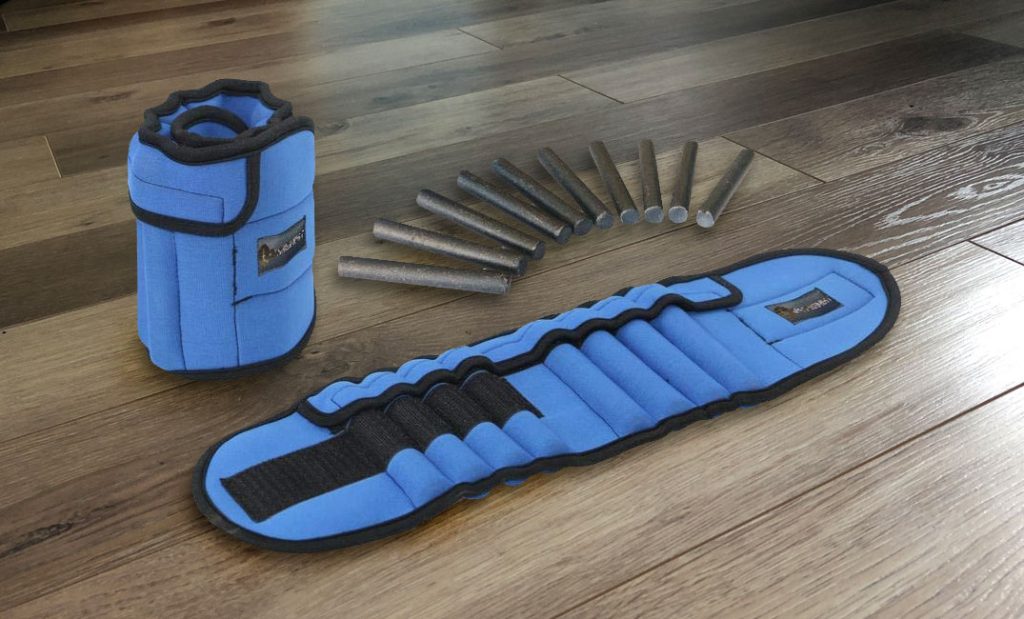
Ankle weights are an excellent piece of equipment that will drastically improve the power and speed of your kicks and general footwork. I use mine in my training schedule every two days. To get the maximum out of it and avoid injury, all movements should be performed in a slow and controlled manner.
If you kick fast with the ankle weights will definitely mess up your technique and damage your joints so avoid. Slowness is your friend with ankle weights. When you remove the weights after a training session, you’ll feel that your legs are very light and your kicks are lightning fast! I like it!
It important to avoid ankle weights filled with sand as they will eventually rip and you’ll lose sand. I use these ankle weights with metal bars .
Training frequency: Every two days.
Duration: 30-45 minutes.
Why I like it: Helped me to improve the speed and power of my kicks and the endurance of my legs.
Furibo
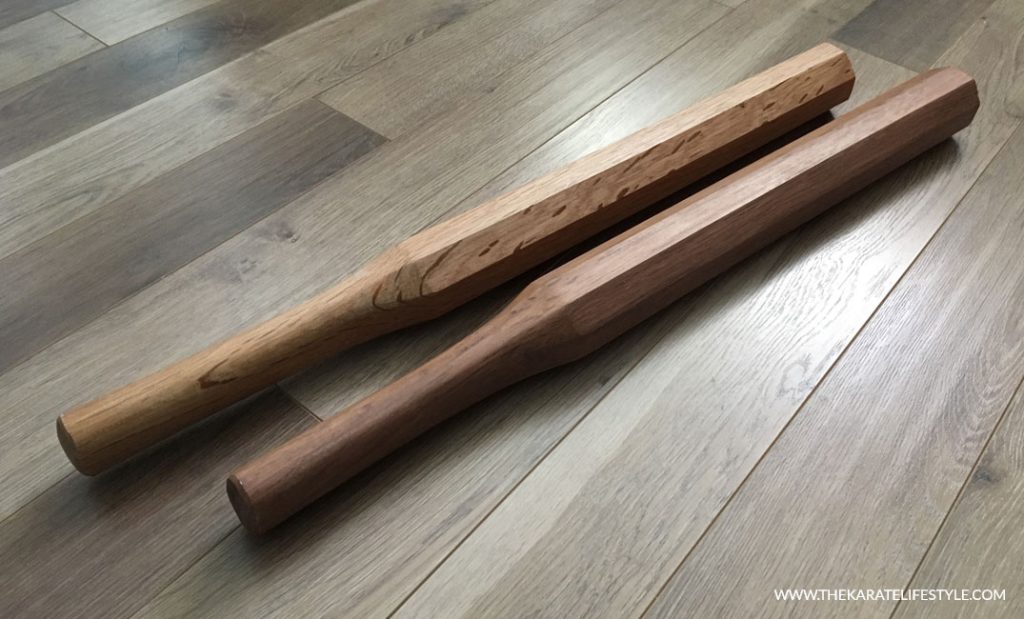
As a complement to my Karate, I practiced Kendo from 2009 to 2013. In Kendo, we practice repetitive individual cutting exercises called suburi. And we practice lots of it during a class, I mean LOTS, like a thousand every single class! I could not follow, so my Kendo sensei advised me to strengthen my body at home using a heavy wooden sword called suburito. Because I wanted to practice inside the house, especially during winter time, I decided to buy a shorter, heavier version of the suburito called furibo. I couldn’t find it in American or Canadian martial arts store nor on Amazon, so I ordered two online from Tozando , an incredible martial arts store that I visited the year before during a trip to Kyoko Japan.
The furibo is one of my favorite tool to work with. Although I don’t actually work my Karate with it, there is a clear martial feel that comes from training with it as you repeat sword cuts. I use my two furibo to work on my conditioning, strength, and endurance and I really love them.
It might be a little off topic, but Tozando is the most beautiful, most amazing martial art store I’ve ever visited. Amazingly high-quality products, very knowledgeable staff and fantastic service in English.
PS: Sorry, I ran a little long on this one.
Training frequency: Every two days.
Duration: 25-30 min.
Why I like it: Great to condition my shoulders and forearms.
Floor dip bar
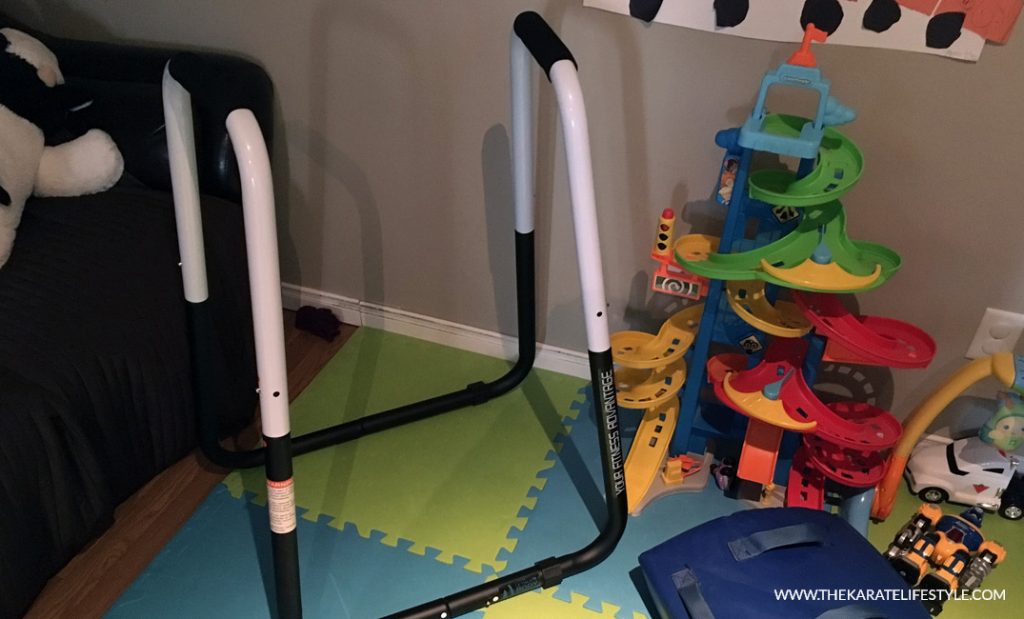
I started using the dip station only two weeks ago, and it quickly became part of my top favorite tools. It popped up in my Amazon suggested items list and got curious about it, so I searched YouTube for exercise ideas, and I got seduced, so I ordered it. Surprisingly, this piece of equipment is quite versatile and offer a wide range of exercises that mainly focuses on strengthening the shoulders, chest, arms, forearms, upper back and abdominals.
No joke, after using my dip station for only a week and a half, my arms and shoulders got stronger and bigger (my wife mentioned it to me!). Personally what I enjoy the most is working my abs with it. Knee raises and leg raises are demanding but fun to perform. I also really like doing reverse rows for chest and arms. I highly recommended this dip station, it’s sturdy, stable and very high quality. I’m glad I’ve bought it.
Training frequency: Twice a week.
Duration: 30-45 minutes.
Why I like it: It helped me quickly improve the strength and size of my shoulders, chest, arms, upper back and abdominals.
Wooden Dummy
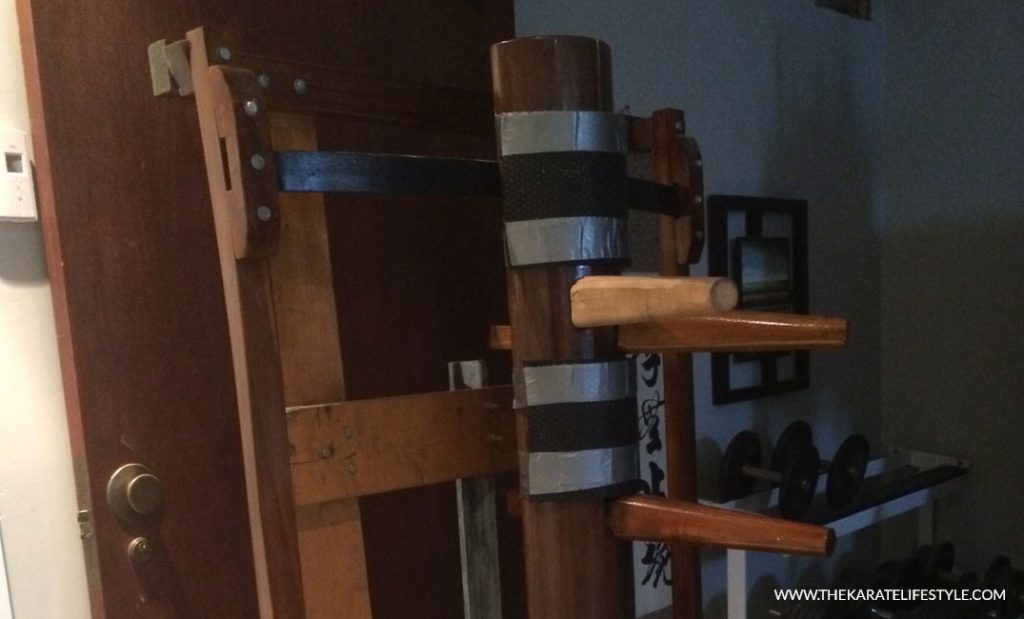
The wooden dummy is another Kung-Fu tool that I really love training with. It’s, in my opinion, the best tool for training close combat Karate techniques, so Goju-Ryu and Uechi-Ryu practitioners should love it. One thing is for sure, it really helped me improve my close distance skills. It’s also perfect to work on speed, mobility, angles of attack, power, explosiveness and simultaneous block/strike exercises.
The wooden dummy is also excellent for practicing grabbing techniques as you can seize it’s “arms”. I also enjoy working my oblique knee stomp on it, something which is difficult to practice on a traditional punching bag. Granted, a wooden dummy is pricey, but it’s well worth the investment – that’s a tool you will definitely enjoy using, and that will last a lifetime. For me, my wooden dummy is the Ferrari of martial arts training equipment.
Training frequency: almost every day.
Duration: 10-30 minutes.
Why I like it: helped me develop close combat skills, grabbing techniques and oblique kick.
Conclusion
If you’re like me and would like to improve your Karate as much as you can, you can’t afford to train only at the dojo. Training Karate at home is a must if you want to get you Karate to the next level. The more you prepare at home, the better you’ll perform at the dojo.
What piece of equipment do you use?
P.S. If you’re looking to buy a punching bag, read my article about the Best Punching Bags for Martial Artists.
- 10 Ways Meditation can Improve Your Karate - March 6, 2024
- Is Tai Chi Effective for Self-Defense? - February 16, 2024
- Do You Need to Add Ground Grappling Into Your Karate? - February 15, 2024

